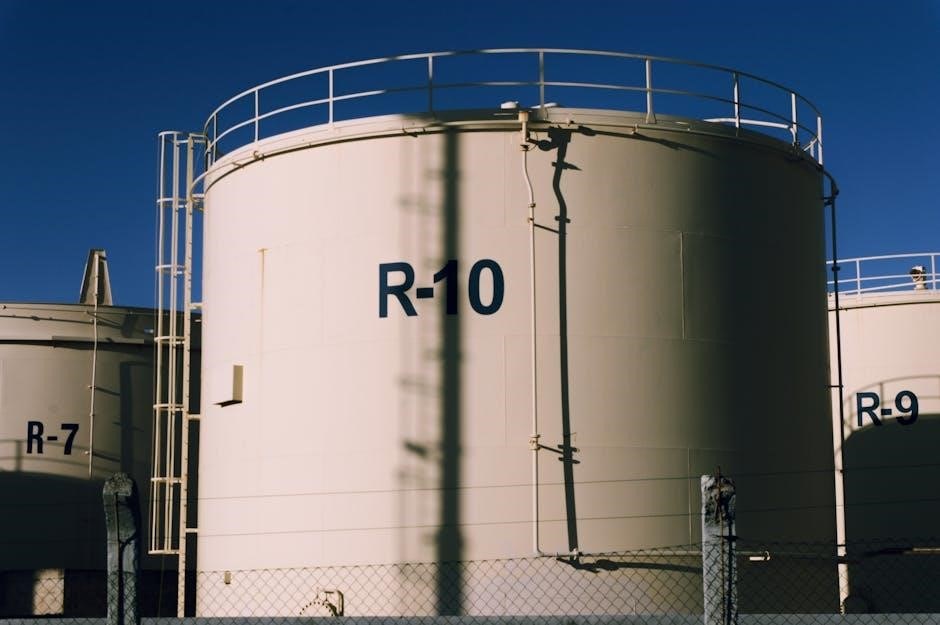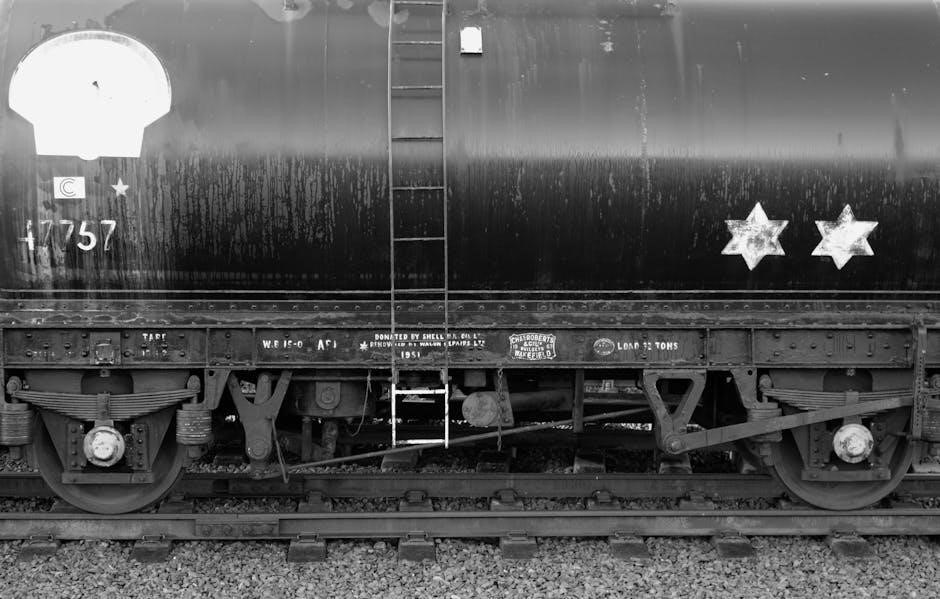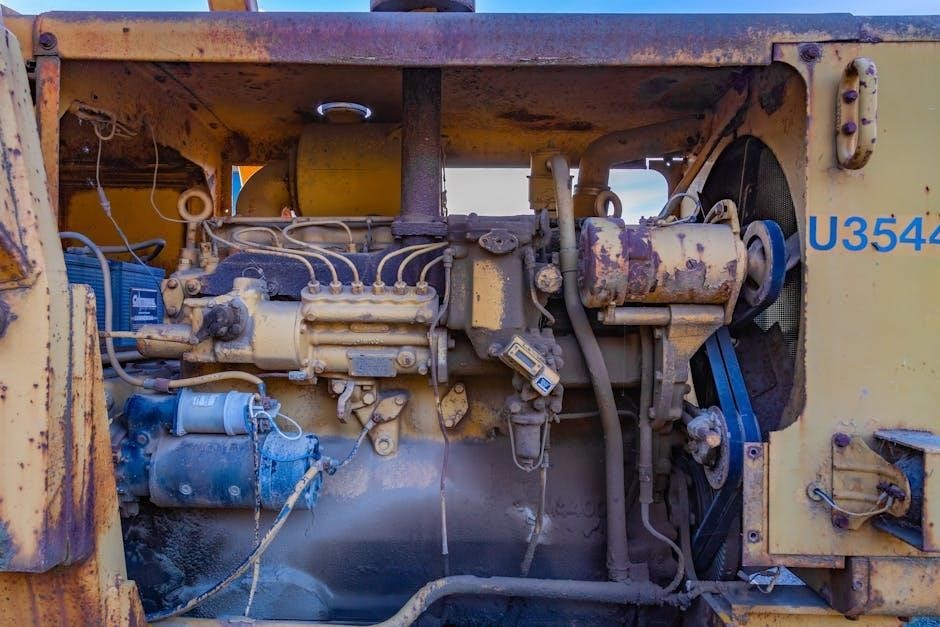
engine oil viscosity chart pdf
Engine oil viscosity refers to the oil’s resistance to flow, crucial for lubrication and engine protection․ The viscosity chart helps in selecting the right oil for optimal performance․
Understanding the Importance of Viscosity in Engine Oil
Viscosity in engine oil plays a critical role in ensuring proper lubrication and protection of engine components․ It determines the oil’s ability to flow and maintain a protective film between moving parts․ Proper viscosity ensures efficient heat transfer, reduces friction, and prevents wear․ Too low or too high viscosity can lead to poor performance, increased fuel consumption, or even engine damage․ Understanding viscosity is essential for selecting the right oil, as it directly impacts engine efficiency, longevity, and overall performance under varying conditions․ A viscosity chart provides a clear guide to making informed decisions for optimal engine operation․
Overview of the Engine Oil Viscosity Chart
The engine oil viscosity chart is a comprehensive guide that categorizes oils based on their viscosity ratings․ It typically includes single-grade and multi-grade oils, with ratings from 0W-16 to 50W, defined by the Society of Automotive Engineers (SAE)․ The chart provides viscosity measurements at different temperatures, ensuring users can select the appropriate oil for their vehicle’s operating conditions․ By referencing the chart, drivers can match their engine’s specifications with the correct viscosity grade, optimizing performance, fuel efficiency, and engine protection․ This tool is indispensable for maintaining the health and longevity of any vehicle’s engine․
What is Viscosity?
Viscosity measures a fluid’s resistance to flow, critical for engine oil’s lubrication properties․ It ensures proper engine protection and performance across varying temperatures and conditions․
Definition and Measurement of Viscosity
Viscosity is a measure of a fluid’s resistance to flow, quantifying its “thickness” and internal friction․ It is typically measured in centiPoise (cP) or Saybolt Universal Seconds (SUS)․ Engine oil viscosity is crucial for ensuring proper lubrication and protection of moving engine parts․ The measurement process involves assessing the oil’s flow rate under specific conditions, such as temperature․ Higher viscosity indicates thicker oil, while lower viscosity means thinner oil․ The Society of Automotive Engineers (SAE) has standardized viscosity grades to help classify oils for various applications․ Understanding viscosity measurements is essential for selecting the right oil for optimal engine performance, as outlined in the viscosity chart․
How Viscosity Affects Engine Performance
Viscosity significantly impacts engine performance by influencing lubrication efficiency and fuel consumption․ Thicker oils provide better lubrication under high temperatures but can impair cold-start performance․ Thinner oils enhance fuel efficiency in cooler conditions but may compromise protection in extreme heat․ Multi-grade oils adapt to temperature changes, optimizing performance across various driving conditions․ Proper viscosity ensures reduced engine wear, prevents overheating, and maintains optimal fuel efficiency․ Always refer to the engine oil viscosity chart and manufacturer recommendations to select the appropriate oil for your vehicle, ensuring a balance between protection and efficiency․

Reading the Engine Oil Viscosity Chart
The engine oil viscosity chart is an essential tool for understanding oil ratings and selecting the right viscosity for your vehicle’s needs, ensuring optimal performance․
Key Components of the Viscosity Chart
A viscosity chart typically includes SAE ratings, temperature ranges, and viscosity indexes․ It displays oil flow behavior at different temperatures, helping users match oil to engine requirements․
Interpreting Viscosity Ratings and Numbers
Viscosity ratings, like 5W-30, indicate oil thickness at cold (W) and hot temperatures․ Lower numbers mean thinner oil, better for cold starts, while higher numbers offer protection at high heat․

Choosing the Right Viscosity for Your Vehicle
Selecting the correct viscosity ensures optimal engine performance, fuel efficiency, and protection․ Always consult your vehicle’s manual and the viscosity chart for the best oil choice․
Factors to Consider: Climate and Temperature
Climate and temperature significantly impact engine oil viscosity․ In colder climates, thinner oils (lower viscosity) are preferred for easier engine starts and better flow․ Conversely, in hotter conditions, thicker oils (higher viscosity) are used to maintain lubrication and prevent wear․ The viscosity chart helps determine the optimal oil for varying temperatures․ Always consider seasonal changes and your vehicle’s operational environment to ensure the right viscosity grade is selected for peak performance and engine longevity․
Matching Viscosity to Your Vehicle’s Specifications
Always refer to your vehicle’s manual to find the recommended viscosity grade․ Using the wrong viscosity can lead to reduced fuel efficiency, increased emissions, or even engine damage․ The viscosity chart aligns with these specifications, ensuring compatibility․ Multi-grade oils, like 5W-30, offer flexibility across temperature ranges, while single-grade oils are suited for specific conditions․ Adhering to manufacturer guidelines ensures optimal engine performance, longevity, and warranty compliance․ Proper matching also enhances lubrication and reduces wear on critical engine components․

Viscosity and Engine Performance
Engine oil viscosity is crucial for performance, as it affects lubrication and heat management․ Proper viscosity ensures optimal flow, reducing friction and wear, while maintaining efficiency․
Impact of Viscosity on Fuel Efficiency
Viscosity plays a significant role in fuel efficiency, as it directly affects the engine’s internal friction and lubrication․ Thinner oils (lower viscosity) typically improve fuel efficiency by reducing resistance in the engine․ However, using the correct viscosity ensures optimal performance without compromising protection․ Higher viscosity oils may increase fuel consumption due to greater resistance․ Modern engines often benefit from low-viscosity oils, especially in warmer conditions, to enhance mileage․ Always consult the engine oil viscosity chart to select the appropriate grade for your vehicle, balancing efficiency and protection․ Proper viscosity ensures the engine operates smoothly, minimizing energy loss and maximizing fuel economy;
Viscosity and Engine Wear Protection
Viscosity is a critical factor in engine wear protection, as it determines the oil’s ability to form a protective film between moving parts․ Higher viscosity oils provide a thicker barrier, offering superior protection under high-temperature and high-load conditions․ Lower viscosity oils, while beneficial for fuel efficiency, may not provide adequate protection in extreme situations․ The engine oil viscosity chart helps identify the optimal grade that balances wear protection and performance․ Proper viscosity ensures that critical engine components, such as piston rings and cylinders, are well-lubricated, reducing wear and extending the engine’s lifespan․ This balance is essential for maintaining engine health and durability․

Common Viscosity Grades
Common viscosity grades include 0W-20, 5W-20, and 5W-30, each offering balanced performance for various climates and engine types, ensuring proper lubrication and fuel efficiency․
Single-Grade vs․ Multi-Grade Oils
Single-grade oils, like SAE 30, maintain a consistent viscosity across a narrow temperature range․ They are suitable for specific conditions, such as high-temperature or low-temperature use․ Multi-grade oils, such as 5W-30, offer versatility by adapting to temperature changes․ They thin in cold weather for easier starts and thicken in heat for better protection․ Multi-grade oils are preferred for modern engines due to their wide operating range, improving fuel efficiency and reducing wear․ The “W” stands for winter, indicating cold-weather performance․ Single-grade oils are simpler but less adaptable, while multi-grade oils provide superior flexibility for varying driving conditions․
SAE Viscosity Grades Explained
SAE (Society of Automotive Engineers) viscosity grades define engine oil’s flow characteristics․ Common grades include 0W-20, 5W-20, and 10W-30․ The “W” stands for winter, indicating cold-weather performance․ The first number (e․g․, 5W) reflects low-temperature viscosity, while the second (e․g․, 30) indicates high-temperature viscosity․ Single-grade oils, like SAE 30, are rated for one temperature range․ Multi-grade oils adapt to temperature changes, offering better fuel efficiency and reduced wear․ Always consult your vehicle’s manual to select the correct SAE grade for optimal performance and protection․ Proper viscosity ensures lubrication, reduces friction, and maintains engine health under varying conditions․

Applications of the Viscosity Chart
The viscosity chart aids in selecting the right oil for vehicles, ensuring optimal performance across temperatures․ It’s essential for both passenger and heavy-duty applications, maximizing efficiency and protection․
Using the Chart for Passenger Vehicles
For passenger vehicles, the viscosity chart simplifies oil selection by matching viscosity grades to engine requirements․ It considers temperature variations, ensuring the chosen oil flows properly in both cold starts and high heat, maintaining consistent lubrication and fuel efficiency․ By referring to the chart, drivers can avoid using oil that’s too thick or too thin, which could lead to reduced performance or engine damage․ This guide is particularly useful for optimizing engine health and longevity, making it an indispensable tool for vehicle maintenance․ Proper viscosity ensures smoother operation and better wear protection, enhancing overall driving experience and engine durability․
Heavy-Duty and Industrial Applications
In heavy-duty and industrial settings, engine oil viscosity charts are critical for selecting oils that withstand extreme conditions․ These applications often involve high temperatures, heavy loads, and prolonged operation, requiring oils with specific viscosity grades to maintain lubrication and prevent wear․ The chart helps identify oils capable of handling intense pressure and stress, ensuring machinery runs smoothly and efficiently․ Industrial engines benefit from higher viscosity oils that provide superior protection against wear and tear, reducing downtime and extending equipment life․ Proper viscosity selection is vital for maintaining performance and reliability in demanding environments, making the viscosity chart an essential tool for industrial maintenance․

Future Trends in Engine Oil Viscosity
Future trends include advancements in synthetic oils, improved efficiency, and evolving viscosity standards to meet stricter emissions and performance demands through innovative tech developments․
Advancements in Synthetic and Blended Oils
Advancements in synthetic and blended oils focus on improving viscosity performance across temperature ranges․ These oils offer enhanced thermal stability, reducing friction and wear․ They maintain optimal flow in cold conditions and resist thinning at high temperatures, ensuring consistent engine protection․ Innovations in molecular engineering enable better fuel efficiency and reduced emissions, aligning with stricter environmental standards․ Synthetic oils also extend drain intervals, lowering maintenance costs․ As engines evolve, synthetic and blended oils are crucial for meeting modern performance and efficiency demands, ensuring superior lubrication and longevity in varying operating conditions․
Evolving Viscosity Standards for Modern Engines
Viscosity standards for modern engines are evolving to meet the demands of advancing technology and environmental regulations․ As engines become more efficient, oil formulations must adapt to maintain optimal performance․ New standards focus on lower viscosity oils to improve fuel efficiency and reduce emissions․ However, these oils must still provide adequate protection under high-temperature and high-pressure conditions․ The development of new viscosity grades ensures compatibility with modern engine designs while addressing the need for sustainability․ These updates are reflected in the engine oil viscosity chart, guiding consumers and manufacturers in selecting the right oil for their vehicles․ This ensures longevity and peak performance․